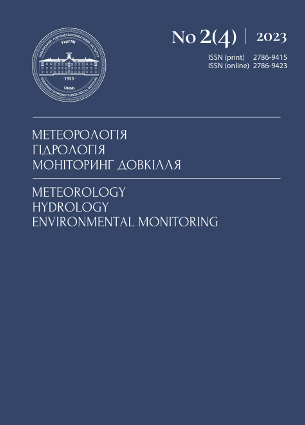ESTIMATION OF THE INTERNAL WATER EXCHANGE VOLUME OF THE KYIV RESERVOIR USING 90SR EMISSION DATA
The Institute of Software Systems of the NAS of Ukraine, Kyiv
https://orcid.org/0009-0007-2274-5838
Shevchenko Oleksii
Ukrainian Hydrometeorological Institute of the State Emergency Service of Ukraine and the National Academy of Sciences of Ukraine, Kyiv, Ukraine
https://orcid.org/0000-0002-5791-5354
Abstract
References
1. Bielyh, T., Sizonenko, V. (2022). Application of the UNDBE Model in Combination with the RALG Procedure to Solve the Problem of Radioecology of Water Bodies, Cybernetics and Computer Technologies. 4(12). 82-92. DOI:10.34229/2707-451X.22.4.0 [In Ukrainian]
2. Denisova, A. I., Timchenko, V. M., Nakhshina, E. P. et al. (1989).Hydrology and hydrochemistry of the Dnieper and its reservoirs. Kiev: Naukova Dumka. [In russian]
3. Gonzalez-Pinzon, R., Haggerty, R., Dentz, M.(2013).Scaling and predicting solute transport processes in streams. Water Resources Research, 49, 4071–4088, doi:10.1002/wrcr.20280
4. Ecological consequences of the Chernobyl accident and their remediation: Twenty years of experience.(2008). IAEA, Vienna.
5. Kaganer, M.S. (1976). Hydrometeorological regime of lakes and reservoirs of the USSR. Cascade of the Dnieper water reservoirs. Leningrad: Gidrometeoizdat. [In russian]
6. Lavryk, V.Y., Nikiforovych, N.A. (1998). Mathematical modeling in hydroecological studies. Kyiv: Phytosociocenter. [In russian]
7. Matthew, J. Lees, L., Camacho, A., Chapra, S.(2000). On the relationship of transient storage and aggregated dead zone models of longitudinal solute transport in streams. Water Resources Research, 36 (1), 213-224.
8. Obukhov, E.V. (2017). External water exchange of the Dnieper reservoir cascade: Monograph. Odessa: Polygraph. [In russian]
9. Present and Future Environmental Impact of the Chernobyl Accident. (2001). INTERNATIONAL ATOMIC ENERGY AGENCY, IAEA-TECDOC-1240, Vienna.
10. Radiogeoecology of water bodies in the zone of influence of the Chernobyl NPP accident (1997). State Committee of Ukraine on Hydrometeorology; National Academy of Sciences of Ukraine. Kiev, Chernobyl interinform, Vol.1: Monitoring of radioactive contamination of natural waters of Ukraine. [In russian]
11. Richardson, K., Carling, P. A., (2006). The hydraulics of a straight bedrock channel: Insights from solute dispersion studies. Geomorphology, 82, 98–125.
12. Timchenko, V. M. (1990). Ecological and hydrological studies of water bodies of the North-Western Black Sea region. Kyiv: Naukova Dumka. [In russian]
13. Timchenko, V. M. (2010). Water exchange processes as a factor in the formation of energy flows in ecosystems of Dnieper reservoirs. Hydrobiological Journal, 46, 3. [In russian]

